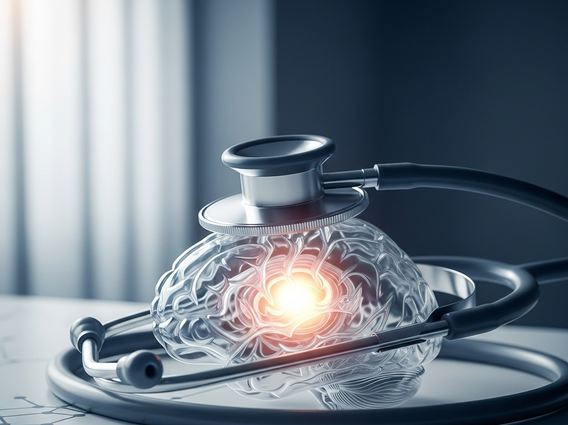BRCA1 and BRCA2 Gene Mutations
BRCA1 and BRCA2 are human genes that produce tumor suppressor proteins. These proteins help repair damaged DNA and, therefore, play a critical role in ensuring the stability of the cell’s genetic material. When either of these genes contains specific mutations, it can lead to an increased risk of developing certain cancers.

Key Takeaways
- BRCA1 and BRCA2 genes are vital for DNA repair, preventing uncontrolled cell growth.
- Mutations in these genes significantly increase the lifetime risk of developing breast, ovarian, prostate, and pancreatic cancers.
- These mutations are typically inherited, meaning they are passed down through families.
- Genetic testing is available to identify BRCA1 and BRCA2 mutations, guiding personalized risk management and treatment strategies.
- Ongoing research continues to uncover new insights into these genes, leading to improved prevention and therapeutic options.
What are BRCA1 and BRCA2 Gene Mutations?
Understanding the role of BRCA1 and BRCA2 genes is fundamental to grasping the impact of their mutations. These genes are not inherently harmful; rather, they are crucial for maintaining cellular health.
Defining BRCA1 and BRCA2 Gene Mutations
To answer the question, “What are BRCA1 and BRCA2 gene mutations?”, it’s important to know that a mutation refers to a change in the DNA sequence of a gene. In the context of BRCA1 and BRCA2, these are specific alterations that prevent the genes from producing functional proteins. When these proteins are impaired, the body’s ability to repair damaged DNA is compromised, which can lead to the accumulation of further genetic errors. Over time, these errors can contribute to the development of cancer.
Normal Function of BRCA1 and BRCA2 Genes
Normally, the BRCA1 (BReast CAncer gene 1) and BRCA2 (BReast CAncer gene 2) genes act as tumor suppressors. Their primary function is to repair DNA damage, particularly double-strand breaks, which are highly dangerous to the cell. By fixing these breaks, they prevent cells from growing and dividing uncontrollably. Think of them as the quality control team for your genetic material, ensuring that DNA is accurately replicated and maintained. Without their proper function, cells are more prone to mutations that can initiate tumor formation.
Types of BRCA1 and BRCA2 Gene Mutations
BRCA1 and BRCA2 gene mutations can take various forms, each impacting the gene’s function differently. These include:
- Missense Mutations: A single base pair change that results in a different amino acid, potentially altering protein function.
- Nonsense Mutations: A single base pair change that results in a premature stop codon, leading to a truncated, non-functional protein.
- Frameshift Mutations: Insertions or deletions of base pairs that are not multiples of three, shifting the reading frame and leading to a completely altered and usually non-functional protein.
- Large Rearrangements: Deletions or duplications of large segments of the gene, affecting multiple exons.
Regardless of the specific type, the common outcome of a pathogenic BRCA1 or BRCA2 mutation is a loss or significant impairment of the gene’s tumor-suppressing function.
How BRCA1 and BRCA2 Gene Mutations Affect Cancer Risk
The presence of a pathogenic BRCA1 or BRCA2 mutation significantly alters an individual’s lifetime risk for several types of cancer. Understanding this increased risk is crucial for informed decision-making regarding screening and prevention.
Increased Cancer Risk with BRCA1 and BRCA2 Mutations
The question of “How do BRCA1 and BRCA2 mutations affect cancer risk?” is central to their clinical importance. Individuals with these mutations face a substantially higher lifetime risk of developing certain cancers compared to the general population. For example, the lifetime risk of breast cancer can increase from about 12-13% in the general population to 45-85% for BRCA1/2 carriers. Similarly, ovarian cancer risk, which is less than 2% in the general population, can rise to 17-44% for BRCA1 carriers and 11-17% for BRCA2 carriers. These elevated risks underscore the critical role these genes play in cancer prevention.
Specific Cancers Linked to BRCA1 and BRCA2 Genes
While most commonly associated with breast and ovarian cancers, BRCA1 and BRCA2 mutations are also linked to an increased risk of other malignancies. The spectrum of associated cancers can differ slightly between BRCA1 and BRCA2 mutations.
| Cancer Type | Associated Gene | Approximate Lifetime Risk (with mutation) | General Population Lifetime Risk |
|---|---|---|---|
| Female Breast Cancer | BRCA1, BRCA2 | 45% – 85% | ~13% |
| Ovarian Cancer | BRCA1, BRCA2 | BRCA1: 17% – 44% BRCA2: 11% – 17% |
~1.2% |
| Male Breast Cancer | BRCA2 (primarily) | ~5% – 10% | ~0.1% |
| Prostate Cancer | BRCA2 (primarily) | ~15% – 30% | ~13% |
| Pancreatic Cancer | BRCA1, BRCA2 | ~2% – 7% | ~0.5% |
| Melanoma | BRCA2 (some studies) | Slightly increased | ~2.6% |
It’s important to note that these are lifetime risks, and not every individual with a mutation will develop cancer.
BRCA1 and BRCA2 Gene Mutation Symptoms
It’s crucial to clarify that there are no direct “BRCA1 and BRCA2 gene mutation symptoms” themselves. The mutations are genetic alterations that exist within a person’s DNA from birth (if inherited) or develop later. They do not cause any physical sensations or noticeable signs. Instead, the symptoms that arise are those of the cancers that may develop as a result of these mutations. These symptoms vary depending on the cancer type and stage, but common signs might include:
- A new lump or mass in the breast
- Changes in breast size or shape
- Persistent abdominal bloating, pelvic pain, or difficulty eating (for ovarian cancer)
- Changes in bowel or bladder habits
- Unexplained weight loss or fatigue
The absence of direct mutation symptoms highlights the importance of genetic testing and proactive screening for individuals at high risk.
Understanding Inherited BRCA1 and BRCA2 Gene Mutations
The hereditary nature of BRCA1 and BRCA2 mutations is a key aspect of their impact, influencing family health and genetic counseling decisions.
Explaining Inherited BRCA1 and BRCA2 Gene Mutations
When we talk about inherited BRCA1 and BRCA2 gene mutations explained, we are referring to germline mutations. These are genetic alterations present in every cell of the body, including egg and sperm cells. This means they can be passed down from a parent to their child. These mutations follow an autosomal dominant inheritance pattern, meaning that if a parent carries one copy of a mutated BRCA gene, there is a 50% chance with each pregnancy that their child will also inherit the mutation. It’s important to remember that inheriting a mutation does not guarantee cancer development, but it significantly increases the risk.
Family History and BRCA1 and BRCA2 Genes
A strong family history of certain cancers is often the first indicator that inherited BRCA1 or BRCA2 mutations might be present. This includes:
- Multiple cases of breast cancer (especially at young ages) in a family
- Ovarian cancer at any age
- Male breast cancer
- Pancreatic cancer
- Prostate cancer (aggressive, or at a young age)
- Multiple cancers in the same individual (e.g., breast and ovarian cancer)
- Ashkenazi Jewish ancestry with a history of these cancers
Such a family history suggests a higher likelihood of an underlying genetic predisposition, prompting consideration for genetic counseling and testing.
Genetic Counseling for BRCA1 and BRCA2 Mutations
Genetic counseling is an invaluable resource for individuals and families concerned about inherited BRCA1 and BRCA2 mutations. A genetic counselor can:
- Assess personal and family medical history to determine cancer risk.
- Explain the complexities of genetic testing, including its benefits, limitations, and potential implications.
- Discuss the emotional, psychological, and social impact of genetic test results.
- Provide guidance on risk management and prevention strategies based on test results.
- Help navigate decisions about sharing genetic information with family members.
This process ensures that individuals make informed decisions about genetic testing and understand the full scope of its implications.
BRCA1 and BRCA2 Gene Mutations: Testing Explained
Genetic testing for BRCA1 and BRCA2 mutations can provide crucial information for individuals at risk, guiding personalized medical management and prevention strategies.
Understanding BRCA1 and BRCA2 Gene Testing
The process of understanding BRCA1 and BRCA2 gene testing involves a simple blood or saliva sample. This sample is then sent to a laboratory where DNA is extracted and analyzed for specific pathogenic mutations within the BRCA1 and BRCA2 genes. Modern genetic tests often use next-generation sequencing to examine the entire coding region of these genes, as well as looking for large genomic rearrangements. The goal is to identify any alterations that are known to increase cancer risk. The results typically take several weeks to become available and are best interpreted in consultation with a genetic counselor or physician.
Who Should Consider BRCA1 and BRCA2 Testing?
Genetic testing is not recommended for everyone. It is generally considered for individuals who have a higher likelihood of carrying a mutation based on personal or family history. Criteria for considering BRCA1 and BRCA2 testing include:
- A personal history of breast cancer diagnosed at age 45 or younger.
- A personal history of ovarian, fallopian tube, or primary peritoneal cancer at any age.
- A personal history of male breast cancer.
- A personal history of pancreatic cancer or metastatic prostate cancer.
- A family history of any of the above cancers, especially in multiple relatives or at young ages.
- Individuals of Ashkenazi Jewish ancestry with a personal or family history of breast, ovarian, or pancreatic cancer.
- Known BRCA1 or BRCA2 mutation in a family member.
These guidelines help identify individuals who would most benefit from the information provided by genetic testing.
Interpreting BRCA1 and BRCA2 Gene Test Results
Interpreting BRCA1 and BRCA2 gene test results requires careful consideration, as outcomes are not always straightforward:
- Positive Result: Indicates a pathogenic mutation was found. This means the individual has an increased risk for certain cancers and may pass the mutation to their children.
- Negative Result: If a known family mutation was tested for and not found, it means the individual does not carry that specific mutation. If no known family mutation exists, a negative result means no pathogenic mutation was identified in the genes tested, but it does not eliminate all cancer risk.
- Variant of Uncertain Significance (VUS): This means a genetic change was found, but it’s not currently known whether it is harmful or benign. VUS results are common and often reclassified over time as more research emerges. They typically do not guide medical management unless reclassified as pathogenic.
A genetic counselor is essential for explaining these results and their implications for medical management and family planning.
Key Facts About BRCA1 and BRCA2 Gene Mutations
Understanding the broader context and prevalence of BRCA1 and BRCA2 mutations, along with available risk management strategies, is vital for those affected.
BRCA1 and BRCA2 Gene Mutation Facts
Several key BRCA1 and BRCA2 gene mutation facts help paint a complete picture of their significance. These genes are responsible for a substantial portion of hereditary breast and ovarian cancers. While they are most known for these, their role extends to other cancers, including prostate and pancreatic. It’s also important to remember that not all breast or ovarian cancers are hereditary; the vast majority are sporadic, meaning they occur by chance without a clear inherited genetic cause. However, for those with a mutation, the risk is significantly elevated, making proactive management crucial.
Prevalence of BRCA1 and BRCA2 Mutations
The prevalence of BRCA1 and BRCA2 mutations varies across different populations. In the general population, approximately 1 in 400 to 1 in 800 individuals carry a pathogenic mutation in one of these genes. However, certain ethnic groups have a higher prevalence. For instance, among individuals of Ashkenazi Jewish (Eastern European Jewish) descent, approximately 1 in 40 individuals carry a BRCA1 or BRCA2 mutation. This higher prevalence is due to a founder effect, where a specific mutation originated in a small population and became more common as that population grew. Understanding these demographic differences is important for targeted screening and counseling.
Risk Management for BRCA1 and BRCA2 Carriers
For individuals identified as carriers of BRCA1 or BRCA2 mutations, several risk management strategies are available to reduce cancer risk or detect cancer at an early, more treatable stage:
- Increased Surveillance: This includes more frequent and intensive screenings, such as annual mammograms and breast MRIs starting at younger ages, and transvaginal ultrasounds and CA-125 blood tests for ovarian cancer (though these are less effective for ovarian cancer screening).
- Chemoprevention: Medications like tamoxifen or raloxifene can be used to reduce breast cancer risk in some high-risk individuals.
- Prophylactic Surgery:
- Bilateral Mastectomy: Surgical removal of both breasts can reduce breast cancer risk by over 90%.
- Salpingo-oophorectomy: Surgical removal of the ovaries and fallopian tubes significantly reduces the risk of ovarian cancer and can also reduce breast cancer risk, especially if performed before menopause.
- Lifestyle Modifications: While not as impactful as medical interventions, maintaining a healthy weight, exercising regularly, limiting alcohol, and avoiding smoking can contribute to overall health and potentially reduce cancer risk.
Decisions about risk management are highly personal and should be made in consultation with a healthcare team, considering individual risk factors, preferences, and life circumstances.
Latest Research on BRCA1 and BRCA2 Gene Mutations
Scientific inquiry into BRCA1 and BRCA2 genes is dynamic, continually expanding our understanding and opening new avenues for prevention and treatment.
New Discoveries in BRCA1 and BRCA2 Genes
The latest research on BRCA1 and BRCA2 genes continues to uncover new insights into their complex roles beyond DNA repair. Recent discoveries include a deeper understanding of how specific mutations impact protein function differently, leading to varied cancer risks and phenotypes. Researchers are also exploring the interaction of BRCA genes with other genetic pathways and environmental factors, aiming to explain why some carriers develop cancer while others do not. This includes studies on modifier genes that might influence penetrance (the likelihood of developing cancer if a mutation is present) and expressivity (the severity of the disease).
Future of BRCA1 and BRCA2 Gene Therapies
The future of BRCA1 and BRCA2 gene therapies is a rapidly evolving field. One of the most promising areas involves PARP inhibitors, a class of drugs that specifically target cancer cells with BRCA mutations by exploiting their existing DNA repair deficiencies. These drugs have shown significant success in treating BRCA-mutated ovarian, breast, prostate, and pancreatic cancers. Beyond PARP inhibitors, research is exploring gene editing technologies like CRISPR to potentially correct BRCA mutations in somatic cells, though this is still in early experimental stages. Immunotherapies are also being investigated for their efficacy in BRCA-associated cancers, given the potential for increased tumor immunogenicity in these cases.
Ongoing Studies on BRCA1 and BRCA2 Mutations
Numerous ongoing studies on BRCA1 and BRCA2 mutations are expanding our knowledge and improving clinical care. These studies encompass a wide range of areas:
- Population-based studies: Investigating the true prevalence of mutations in diverse populations and their associated cancer risks.
- Clinical trials: Testing new drugs and treatment combinations for BRCA-associated cancers, including novel PARP inhibitors and immunotherapies.
- Prevention trials: Evaluating the effectiveness of new chemopreventive agents or screening protocols for carriers.
- Basic science research: Delving deeper into the molecular mechanisms of BRCA protein function and how mutations disrupt these processes.
- Psychosocial research: Addressing the psychological impact of genetic testing and living with a BRCA mutation.
These collective efforts are crucial for translating scientific discoveries into tangible benefits for individuals and families affected by BRCA1 and BRCA2 mutations.
Frequently Asked Questions About BRCA1 and BRCA2 Gene Mutations
What exactly are BRCA1 and BRCA2 gene mutations?
BRCA1 and BRCA2 are genes that normally produce proteins responsible for repairing damaged DNA. A mutation in these genes means there’s an alteration in their DNA sequence, preventing them from functioning correctly. When these genes are mutated, the body’s ability to fix DNA damage is impaired, leading to an accumulation of genetic errors that can increase the risk of developing certain cancers, particularly breast and ovarian cancer.
These mutations are typically inherited, meaning they are passed down from a parent to a child. While everyone has BRCA1 and BRCA2 genes, it’s the specific pathogenic mutations within them that are a concern for increased cancer risk.
How do BRCA1 and BRCA2 mutations affect cancer risk?
BRCA1 and BRCA2 mutations significantly elevate an individual’s lifetime risk of developing several types of cancer. For women, the most notable increase is in breast and ovarian cancer risk, which can be substantially higher than in the general population. Men with these mutations also face increased risks, including male breast cancer and prostate cancer, as well as pancreatic cancer and melanoma for both sexes.
The exact level of risk can vary depending on the specific gene (BRCA1 vs. BRCA2), the type of mutation, family history, and other genetic and environmental factors. However, the presence of these mutations necessitates proactive risk management and surveillance strategies.
Is genetic testing for BRCA1 and BRCA2 mutations always recommended?
Genetic testing for BRCA1 and BRCA2 mutations is not universally recommended for everyone. It is primarily advised for individuals who have a personal or family history strongly suggestive of an inherited cancer syndrome. This includes criteria such as early-onset breast cancer, ovarian cancer at any age, male breast cancer, pancreatic cancer, or a known BRCA mutation in a close family member.
The decision to undergo testing should always involve a discussion with a healthcare provider or genetic counselor. They can assess your individual risk factors, explain the implications of testing, and help you make an informed choice that aligns with your personal values and medical needs.
Can a person have a BRCA mutation without a family history of cancer?
While a strong family history of cancer is a primary indicator for considering BRCA testing, it is possible for an individual to carry a BRCA mutation without an obvious family history. This can happen for several reasons. The mutation might be inherited from a parent who also carries the mutation but never developed cancer, or developed a cancer type not typically associated with BRCA, or passed away before cancer onset.
Additionally, family history might be incomplete or unknown due to small family size, adoption, or limited information about relatives. In some rare cases, a new (de novo) mutation can occur, though this is less common for BRCA genes. Therefore, even in the absence of a clear family history, certain personal cancer diagnoses might still warrant testing.





